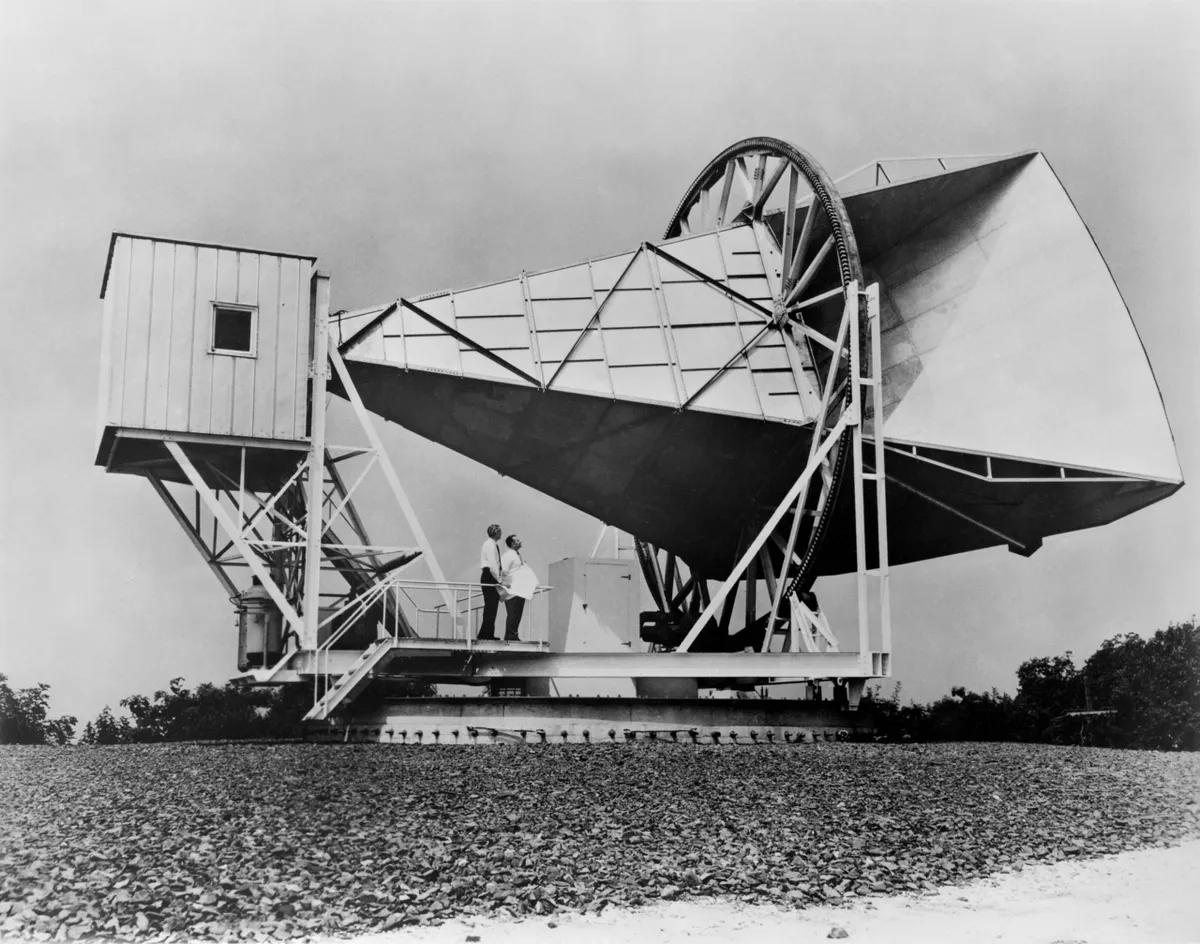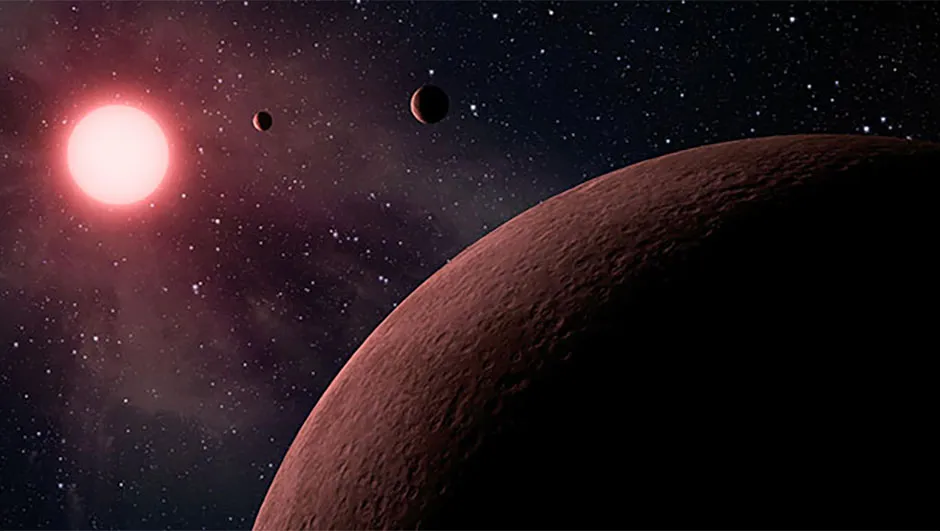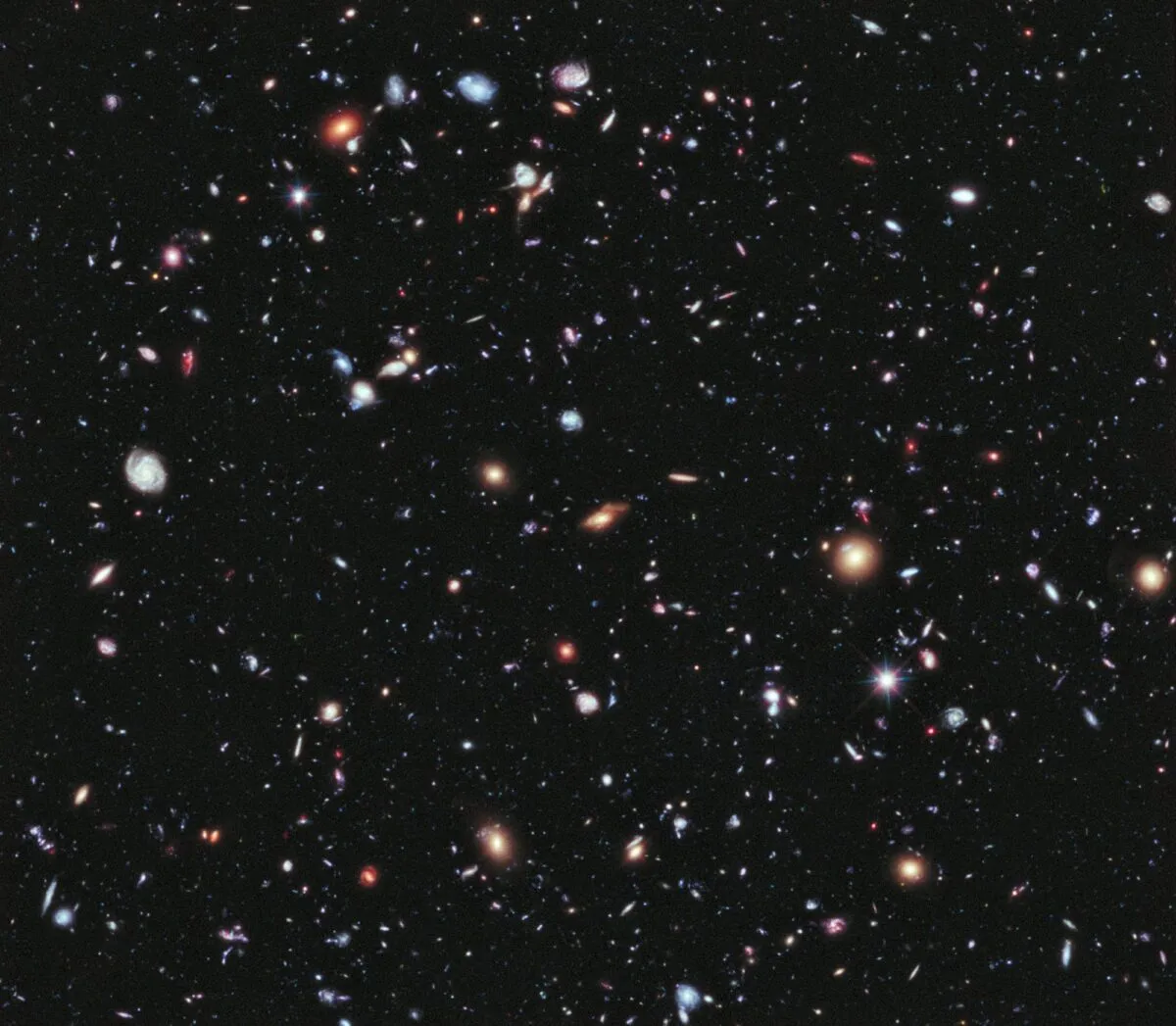Two decades ago, we knew very little about the state of our Universe. While cosmologists had speculated on everything from its size to what it’s filled up with, there were very few hard and fast measurements to back up those theories. But that changed when the Wilkinson Microwave Anisotropy Probe (WMAP) launched on 30 June 2001.
Over 9 years it mapped the sky more precisely than ever before, transforming the scientific field of cosmology from a discipline of educated guesswork to one of precision science.
Considering the impact of its results, WMAP was a fairly modest spacecraft. It was proposed in 1995 with a budget of just $150 million, with the goal of creating an all-sky map of the cosmic microwave background (CMB).
Read more mind-blowing cosmology: our interview with Katie Mack on how the Universe could end, a guide to the biggest objects in the Universe and interesting facts about space.
Podcast: NASA's WMAP mission
What is the cosmic microwave background?

What exactly is the cosmic microwave background? There are few better placed to explain than Chuck Bennett, principal investigator of the WMAP mission.
"The cosmic microwave background is the remnant energy left from the early Universe," he says.
"It was high energy radiation, but because the Universe expanded and cooled, its energy dropped into the microwave region of the spectrum. It’s basically a photo of the early Universe."
The CMB was first observed in 1964 as a background hiss of microwaves coming from every direction, with a temperature of approximately 4 Kelvin (or 4ºC above absolute zero), which would later be measured more precisely as 2.75K.

It took almost 30 years from that initial detection for the first full-sky map of the CMB to be charted by the Cosmic Background Explorer (COBE).
Operating between 1989 to 1993, this spacecraft revealed that the CMB’s temperature wasn’t uniform in all directions, but rose and fell by 0.003K – a change of just 0.1%.
Though miniscule, these fluctuations were an imprint of the structure of the Universe at the time the CMB was created, just 378,000 years after the Big Bang.
By studying these fluctuations, cosmologists have been able to work out a great number of details about the Universe – from how old it is to how much dark matter it contains.
But while COBE was a good start, cosmologists realised that more precision was needed to really pin down these parameters, and so the WMAP mission was put forward.
After launching in 2001, WMAP spent its first six months in orbit creating an all-sky map of the CMB. The spacecraft proceeded to scan the entire sky another 17 times over the next nine years, each pass adding more detail and precision.
With this map in hand, cosmologists could then use the map to establish exactly what kind of Universe we live in.

Prior to WMAP, cosmologists had been able to use theoretical models, such as relativity and our understanding of the Big Bang, to generate a set of mathematical instructions explaining how the Universe came about.
If we think of this as a cake recipe, they knew the method for baking, but what they didn’t know was how much of each ingredient there was or how long it had been cooking.
"We have computer programs where we can put in different ingredients – how much dark matter, dark energy – anything we want," says Bennett.
Even small changes to these cosmological parameters – the numbers governing factors such as how much dark matter there is, or how fast the Universe is expanding – results in a very different looking Universe. The only way to create a simulated Universe that looks anything like observed reality is by putting in the correct parameters.
"We run all these cases and try to match the observations," says Bennett.
The ‘matched’ simulation isn’t an exact replica of the WMAP observations, but instead one which has the same set of statistical properties. Even so, by using this method, the cosmologists were able to pin down the parameters to a much higher degree of accuracy than had ever been managed before.
"There was a factor of 70,000 improvement. It was enormous," says Bennett.
While these parameters might look like a table of random numbers to the uninitiated, to cosmologists it was a revolutionary insight into the long-hidden nature of our Universe.
One of the first things the group tried to pin down was what our Universe is made of.
What is the Universe made of?

As we understand it, space is filled with three basic things. First is baryonic matter, which is what cosmologists call normal matter – things like the atoms that make up everything from the stars and planets, to you and the magazine sitting in your hands.
Then there is cold dark matter, an unseen material that doesn’t interact with light, rendering it invisible to conventional telescopes.
The only reason we know it’s there is because astronomers have tracked the motions of galaxies and deduced there is an invisible mass holding them together.

Finally, there is dark energy – a mysterious ‘anti-gravity’ force, which seems to be driving space apart.
From using WMAP measurements, astronomers could start to calculate the ratio of these three parts.
"We have the make-up of the Universe as 5% atoms, 25% cold dark matter and 70% dark energy," says Bennett. "Other things flow from that, such as the age of the Universe."
This derives from an extension of relativity, known as the Freidmann equation, which explains how the Universe expands over its lifetime, depending on what it’s made of.

With these precise compositional measurements in hand, the WMAP team were able to calculate that the Universe is 13.77 billion years old.
This same work also helped settle one of the biggest controversies in the field of cosmology at the time: was the expansion of the Universe accelerating?
The expansion of the Universe

That expansion was first measured by Edwin Hubble in 1929. Since then, people had been trying to observationally determine exactly how fast the expansion was taking place.
In 1998, two separate groups measured that not only was the Universe expanding, but that this rate of expansion was speeding up – the exact opposite of what they expected to find.
"People didn’t believe these measurements of the accelerated expansion of the Universe," says Bennett, "Until it was backed up by [WMAP’s] independent method of measuring this energy component."
For the expansion to be speeding up, there must be something driving space apart that gets stronger the further things are apart from each other – the opposite of gravity, which pulls things together more strongly the closer they are.
To explain this mysterious force, astronomers came up with the concept of dark energy.
"Dark energy is winning the tug of war between gravity pulling things together and the anti-gravity dark energy pushing things apart. The energy component in our model predicts that the Universe will expand forever. However, we still don’t know what dark energy is, and if it changes its behaviour in the future, then all bets are off!"
What shape is the Universe?

One of the final big questions that WMAP helped to answer is what shape our Universe is.
The ‘curvature of the fabric of spacetime’ can be a difficult concept to grasp, requiring you to think in dimensions beyond human perception, so the concept is normally conveyed as a two-dimensional analogy.
The Universe could be flat in all directions, with no curvature at all. Alternately, it could be spherical; meaning that like on Earth, though your immediate vicinity might look flat, when you zoom out far enough you can see the Universe is round.
Finally, the Universe could be shaped like a saddle, where it curves along one axis in one direction and the opposite way along the other axis.
"What we found was that the Universe is very close to the infinite flat geometry," says Bennett.

However, uncertainties in the measurements make it difficult to be sure if the curvature is actually zero, meaning a flat Universe, or if it actually has a slight curve in one direction or the other.
WMAP ended its mission in 2013 having granted humanity a view of the Universe unlike any that had gone before.
It was followed by the European Space Agency’s Planck mission, which used more sensitive instruments with a much higher resolution to create an even more precise map, which only served to back up WMAP’s findings – with the exception of estimating a slightly older age for the Universe, at 13.82 billion years.
WMAP was a ground-breaking mission, which completely changed our view of the cosmos.
As Adam Riess, a cosmologist who would go on to win the 2011 Nobel Prize in Physics for measuring the acceleration of the Universe once said: "WMAP has brought precision to cosmology and the Universe will never be the same."
Dr Ezzy Pearson is BBC Sky at Night Magazine’s news editor. Her book Robots in Space is published by The History Press.
This article originally appeared in the June 2021 issue of BBC Sky at Night Magazine.